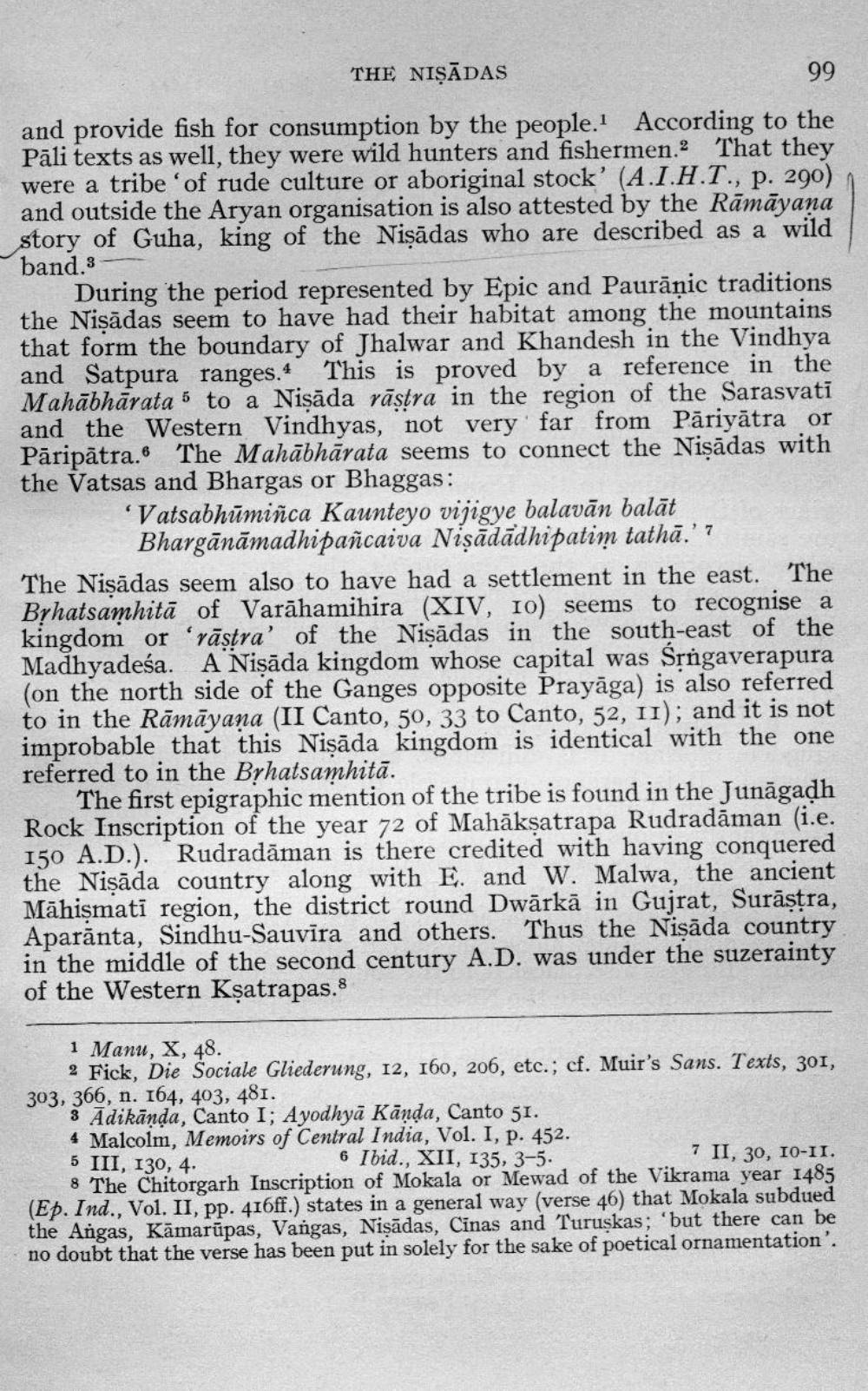________________
THE NIŞĀDAS
99
and provide fish for consumption by the people.1 According to the Pāli texts as well, they were wild hunters and fishermen. That they were a tribe of rude culture or aboriginal stock' (A.1.H.T., p. 290) and outside the Aryan organisation is also attested by the Rāmāyana story of Guha, king of the Nişādas who are described as a wild band.3
During the period represented by Epic and Paurāņic traditions the Nişādas seem to have had their habitat among the mountains that form the boundary of Jhalwar and Khandesh in the Vindhya and Satpura ranges. This is proved by a reference in the Mahābhārata 5 to a Nişāda rāstra in the region of the Sarasvati and the Western Vindhyas, not very far from Pāriyātra or Pāripātra. The Mahābhārata seems to connect the Nisādas with the Vatsas and Bhargas or Bhaggas:
'Vatsabhūmiñca Kaunteyo vijigye balavān balāt
Bhargānāmadhipañcaiva Nişādādhipatim tathā.'? The Nişādas seem also to have had a settlement in the east. The Brhatsamhitā of Varāhamihira (XIV, 10) seems to recognise a kingdom of 'rāstra' of the Nisādas in the south-east of the Madhyadeśa. A Nişāda kingdom whose capital was Śrngaverapura (on the north side of the Ganges opposite Prayāga) is also referred to in the Rāmāyana (II Canto. 50. 33 to Canto. 52. W: and it t is not improbable that this Nisāda kingdom is identical with the one referred to in the Byhatsamhita.
The first epigraphic mention of the tribe is found in the Junāgadh Rock Inscription of the year 72 of Mahāksatrapa Rudradāman (i.e. 150 A.D.). Rudradāman is there credited with having conquered the Nişāda country along with E. and W. Malwa, the ancient Māhismati region, the district round Dwārkā in Gujrat, Surāstra, Aparānta, Sindhu-Sauvīra and others. Thus the Nişāda country in the middle of the second century A.D. was under the suzerainty of the Western Kșatrapas. 8
1 Manu, X, 48.
2 Fick, Die Sociale Gliederung, 12, 160, 206, etc.; cf. Muir's Sans. Texts, 301, 303, 366, n. 164, 403, 481.
3 Adikānda, Canto I; Ayodhyā Kānda, Canto 51. 4 Malcolm, Memoirs of Central India, Vol. I, p. 452. 5 III, 130, 4. 6 Ibid., XII, 135, 3-5.
7 II, 30, 10-II. 8 The Chitorgarh Inscription of Mokala or Mewad of the Vikrama year 1485 (Ep. Ind., Vol. II, pp. 416ff.) states in a general way (verse 46) that Mokala subdued the Angas, Kāmarūpas, Vangas, Nisādas, Cinas and Turuskas; 'but there can be no doubt that the verse has been put in solely for the sake of poetical ornamentation'.




